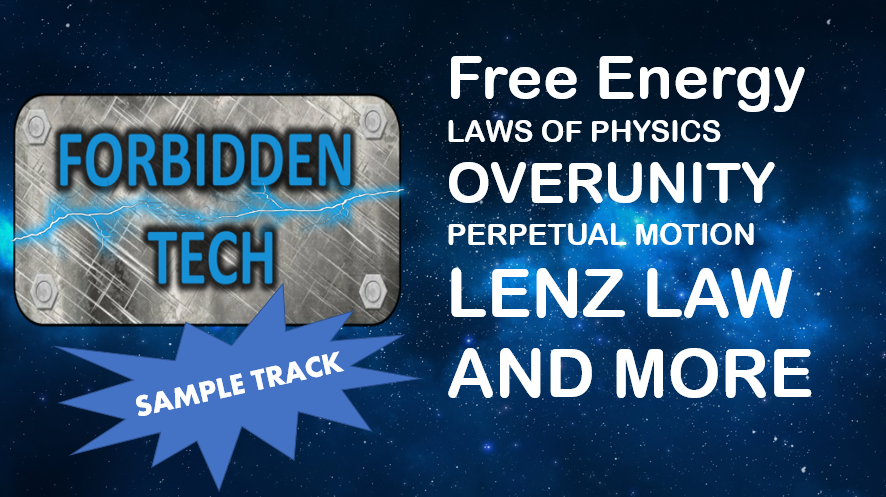In the world of free energy development, you’ll hear a lot of terms tossed around. Here are a few definitions to help you with some of the basics.
Free Energy
Free energy means energy at no cost, like mechanical energy which drives a wind mill, or light in a solar cell which is transformed into DC electric current. Energy from free sources include wind, solar, water, atmospheric electricity, resonance and mechanical vibrations, earth batteries, chemical reactions, and pressure system changes. These are all ways of generating or accumulating energy that cannot be bought, metered or sold.
Efficiency
Efficiency is the useful energy (output) from a device, over the energy that is put into the device (input). And if you want to find the percent, like this motor is 75% of …… or this transformer is 95% efficient and the energy efficiency, you would use the following equation; it is energy output over energy input times 100 percent.
Currently the systems we are using right now are extremely wasteful and inefficient. For example, the average home backup generator requires 15kw worth of power in (in the form of gasoline for example) in order to generate 10kw of electrical power out. Most generators operate at a loss. They are designed this way in order to encourage the consumption of fossil fuels.
Planned Obsolescence
Planned obsolescence, or built-in obsolescence, is a design policy followed in big industrial manufacturing that gives a product a planned artificially limited useful life. This means the product will become obsolete or unfunctional after a certain period of time. The logic behind this strategy is to generate long term sales volume by reducing the time between repeat purchases. The result is lower quality products that just don’t last as long as they should.
“They just don’t build them like they used to” is a term you hear a lot when it comes to appliances and devices that we depend on in our daily lives. In truth it would be more accurate to say “They don’t build them like they should.” The technology exists to build more efficient and longer lasting products. Inefficient motors is a prime example of something that could be improved. However current corporate structuring (that many customers feel is corrupt) won’t allow for quality improvement to effect their profit margin.
Overunity
Overunity simply means you get more energy out than you put in, the scientific term meaning greater than 1. This is when the useful energy output versus the useful energy input is higher than 100%. In physics (and elsewhere) unity is another name for 1. It is confused with perpetual motion because the idea then is that you could connect an over-unity device’s output to its input and then it would run itself.
Perpetual Motion
A hypothetical machine that can do work indefinitely without an energy source (exists in isolation) often confused with overunity. The theory of such a device is that it can exist in isolation meaning, it operates on its own without any additional external support system. However it does access a reservoir of energy. It is not something that is bound by a closed system.
EMF and Back EMF
Electromotive force, also called EMF, is the voltage developed by any source of electrical energy, such as a battery or dynamo. It is generally defined as the electrical potential for a source in a circuit.
Back EMF, also known as counter-electromotive force (CEMF), is the voltage, or electromotive force, that pushes against the current which induces it. CEMF is the voltage drop in an alternating current (AC) circuit caused by magnetic induction
The term back electromotive force, or just back-EMF, is most commonly used to refer to the voltage that occurs in electric motors where there is relative motion between the armature of the motor and the magnetic field from the motor’s field magnets, or windings. From Faraday’s law, the voltage is proportional to the magnetic field, length of wire in the armature, and the speed of the motor. This effect is not due to the motor’s inductance and is a completely separate effect.
In a motor using a rotating armature in the presence of a magnetic flux, the conductors cut the magnetic field lines as they rotate. This produces a voltage in the coil; the motor is acting like a generator at the same time it is a motor. This voltage opposes the original applied voltage; therefore, it is called back-electromotive force. With a lower overall voltage across the armature, the current flowing into the motor is reduced.
To observe the effect of Back-EMF of a motor, one can perform this simple exercise. With an incandescent light on, cause a large motor such as a drill press, saw, air conditioner compressor, or vacuum cleaner to start. The light may dim briefly as the motor starts. When the armature is not turning (called locked rotor) there is no Back-EMF and the motor’s current draw is quite high. If the motor’s starting current is high enough it will pull the line voltage down enough to notice the dimming of the light.
Faraday’s Law of Induction:
Faraday’s law of induction is a basic law of electromagnetism predicting how a magnetic field will interact with an electric circuit to produce an electromotive force (EMF)—a phenomenon called electromagnetic induction. It is the fundamental operating principle of transformers, inductors, and many types of electrical motors, generators and solenoids.
The Maxwell–Faraday equation is a generalization of Faraday’s law, and is listed as one of Maxwell’s equations.
Lenz Law
The Lenz law was named after the physicist Heinrich Lenz who formulated it in 1834. It states that the direction of current, induced in a conductor by a changing magnetic field, due to Faraday’s law of induction, will be such that it will create a field that opposes the change that produced it.
The Lenz effect can best be seen in a simple experiment when a highly magnetized ball is passed through a metal tube. The magnetic field causes the ball to move slowly through the tube showing resistance.
We cover this topic and much more in our new video course Forbidden Tech
check out a free sample of the video course here:













